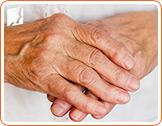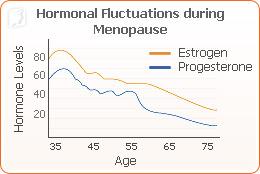Osteoporosis in older women is very common. While it is believed that nearly all women will suffer from some degree of the disease during their lifetime, those who are 65 and above are at a higher risk. Symptoms can be more evident in older women, and it is important that they take care of their bodies and learn the warning signs of osteoporosis.
What Is Osteoporosis?
Osteoporosis is a degenerative bone disorder in which bones become thinner and weaker, and as a result, more prone to breaking. Bones begin to lose density and mass when women are around the average age of 30. Thus, as women become older, they are more susceptible to having weak bones and incurring fractures and breaks.

Bone health relies on the function and coexistence of two important types of cells. Cells called osteoclasts break down the old bone, while osteoblasts build new bone. The renewal of bones is much quicker during younger years, but once women reach their early to mid 30s, the process slows down considerably and causes the bones to weaken. The bones that are most vulnerable to breaking are the wrists, hips, and vertebrae.
Injuries can hinder your independence, quality of life, and even life expectancy. It is important that women maintain a healthy diet, exercise, and have regular screenings done to ensure that their bones and bodies are healthy.
What Causes Osteoporosis?
A hormone imbalance that is most prevalent during menopause is the primary cause of osteoporosis in older women. When hormones are balanced, estrogen helps maintain the osteoblasts at a controlled level so that the body can regenerate bone mass.

Even with personal factors like medical history and diet, osteoporosis is simply more common the older women get. It is believed that half of the population has the disorder by the age of 75.
As women age, symptoms of osteoporosis can be more noticeable. Some of the more common and visible symptoms include decreased height, curved back, hunched posture, and protruding abdomen.
How to Manage Osteoporosis in Older Women
When treating osteoporosis and menopause symptoms, it is best to begin by evaluating your lifestyle and certain habits that can help prevent bone decay. Consuming the right amount of calcium through foods, drinks, and supplements is highly recommended, as is consuming appropriate levels of vitamin D. Women should also exercise regularly and focus on strength and resistance training so that bones remain strong.

Like many health conditions, osteoporosis is much easier to prevent than it is to treat. Women should maintain a healthy lifestyle through diet and exercise, stop smoking, and limit their consumption of alcohol and caffeine. In addition, some alternative medicines such as herbal remedies and natural supplements can help balance hormone levels and improve bone density.
For more information on osteoporosis and how to treat it, follow the links below.
Sources
- American Physical Therapy Association.(n.d)."What You Need to Know about Osteoporosis". Retrieved from www.apta.org.
- Cleveland Clinic.(n.d)."Menopause and Osteoporosis".Retrieved from http://my.clevelandclinic.org
- National Osteoporosis Foundation.(n.d)."Prevention: Who's at Risk".Retrieved from www.nof.org.
- New York State Department of Healt.(n.d)."Calcium and Healthy Bones".Retrieved from www.health.state.ny.us.



